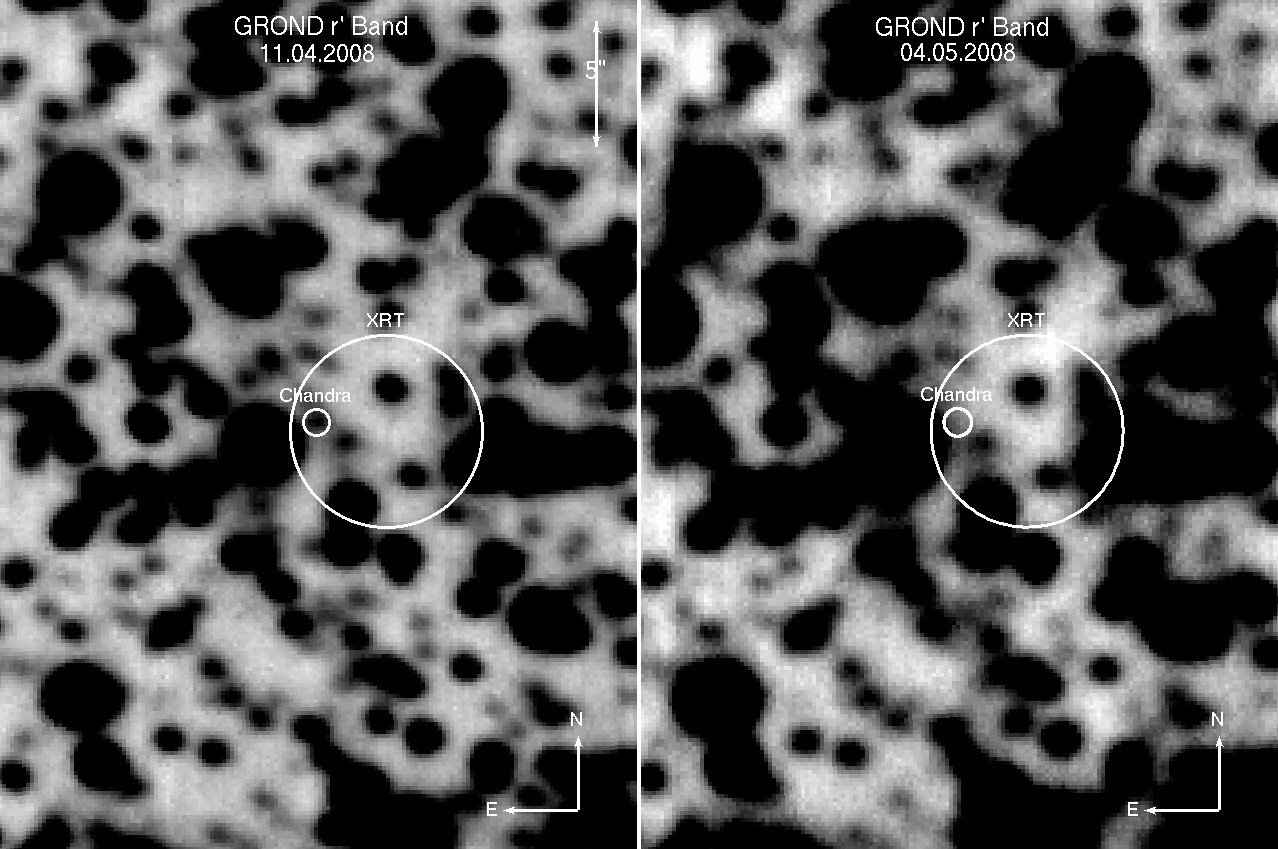![]() Previous ATELs
Previous ATELs
We also observed XTE J1719-291 with the 7-channel imager GROND (Greiner et al. 2008, PASP 120, 405) on two epochs: April 11 between 9:08-9:42 UT (effective exposure of 1120 sec in g'r'i'z' and 900 sec in JHK), and May 4 at 8:21-8:53 UT (effective exposure of 1475 sec in g'r'i'z' and 1200 sec in JHK).
We detect a source at RA(2000)=17h 19m 17.18s and DEC(2000)= -29d 04' 09.98" with uncertainties of 0.3", coincident with the Chandra position. The object is clearly visible in the first epoch, but not detected in the second epoch (see the r'-band images of both epochs at URL http://www.mpe.mpg.de/~jcg/xrt/xrtj1719m291.html). We suggest this object to be the optical counterpart of the Chandra, Swift and RXTE source.
Photometry was done against SA100-241 in g'r'i'z', and against 2MASS for JHK, but is strongly compromised by a nearby bright object which in JHK is even saturated. Using PSF fitting, we measure g' = 22.98, r' = 22.6, i'=22.3 and z'=22.6 (all in AB system), with statistical errors of ±0.15 mag. This is surprisingly blue considering the large absorption seen in the Swift X-ray spectrum. Applying the corresponding AV=3.3 correction, our g'r'i'z' SED is best fit with a spectrum Fν ~ ν3, even bluer than the Rayleigh-Jeans tail of a putative accretion disk.
The upper limits during the second epoch are g' > 23.7 ± 0.1, r' > 23.5 ± 0.1, i' > 22.9 ± 0.1, z' > 22.9 ± 0.1, J > 20.2 ± 0.1, H > 19.4 ± 0.1, K > 18.6 ± 0.1 (JHK in Vega system), i.e. the source had faded by 0.7 mag, in concordance with the fading seen at X-rays during that time (Degenaar & Wijnands 2008, ATEL #1541). From the upper limits (and assuming a distance of 8 kpc) we derive an absolute V magnitude of >5.8, suggesting a companion K0V or later (if this transient is a binary system).

GROND images of XTE J1719-291 at two epochs in the r' band.
Jochen Greiner, last update: 13-Jun-2008